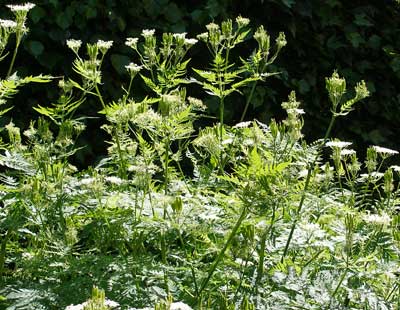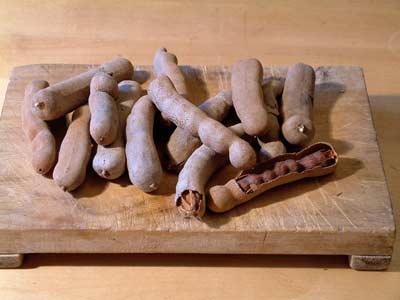
Sweet cicely. The seeds are long, up to a foot, ridged and black with an aniseed flavour. They can be used in salads when young or as a spice as they grow older. The leaves have a smell reminiscent of myrrh and aniseed and can be added to soups, omelettes, drinks and liquors. The fruits, collected before they ripen and then dried, can be used to give meats a liquorice-like flavour, and the roots can be used as a vegetable.
Aubergine (US: eggplant). Likely to be the little pea aubergine commonly used in Thai cuisine.

Tamarind. A sour-sweet fruit, sometimes known as the Indian date, used as a souring agent. It comes in long, dry brown pods which look almost like dried broad bean pods. Inside is a long, segmented fruit, like a long brown caterpillar. Each segment contains a hard, shiny black seed. As the pods dry the fruit becomes sweeter. A visitor from Mauritius suggested shaking the tamarind and, if you could hear that the fruit had detached and was rattling a little inside the pod, you would find that the fruit was sweet. All you need to do is to remove the pod and then chew the fruit, discarding the seeds. It is also available mashed and formed into a pulpy block or as a juice. In this form it is used like lemon juice.